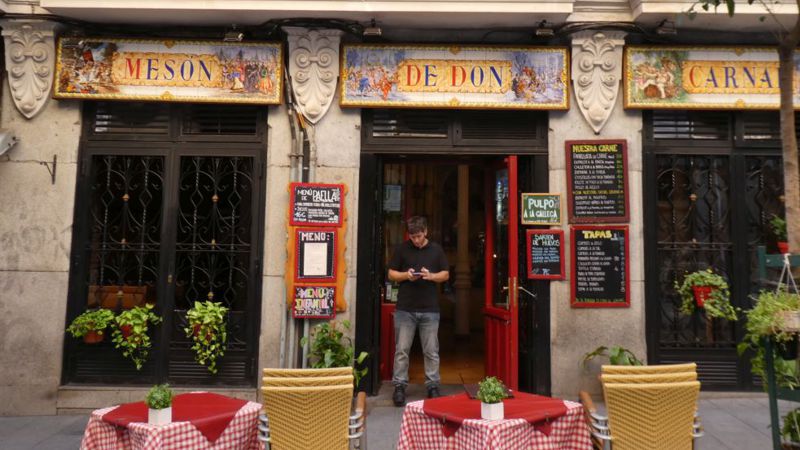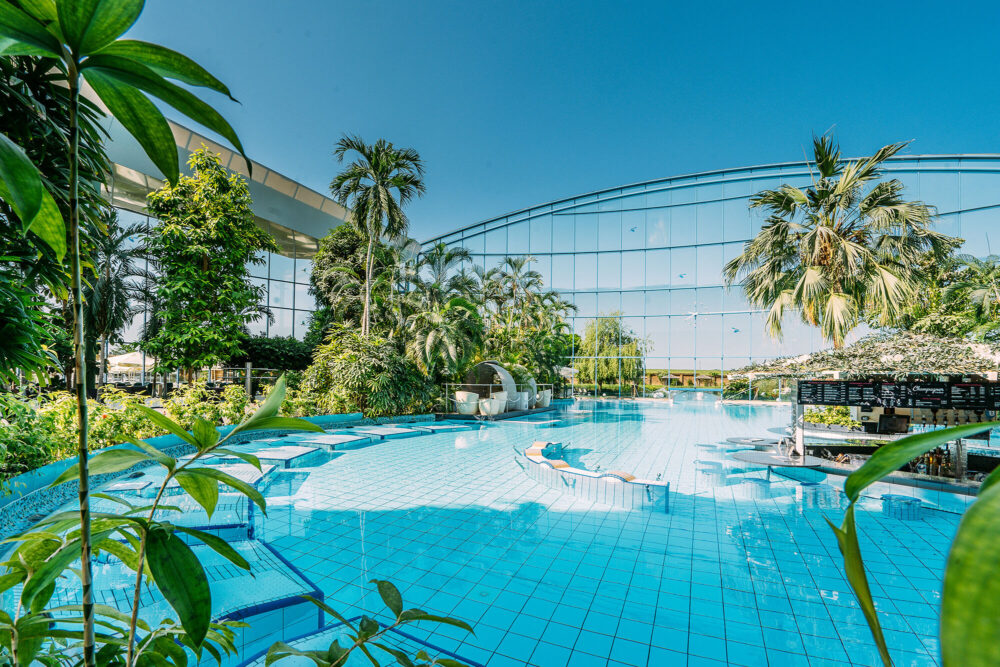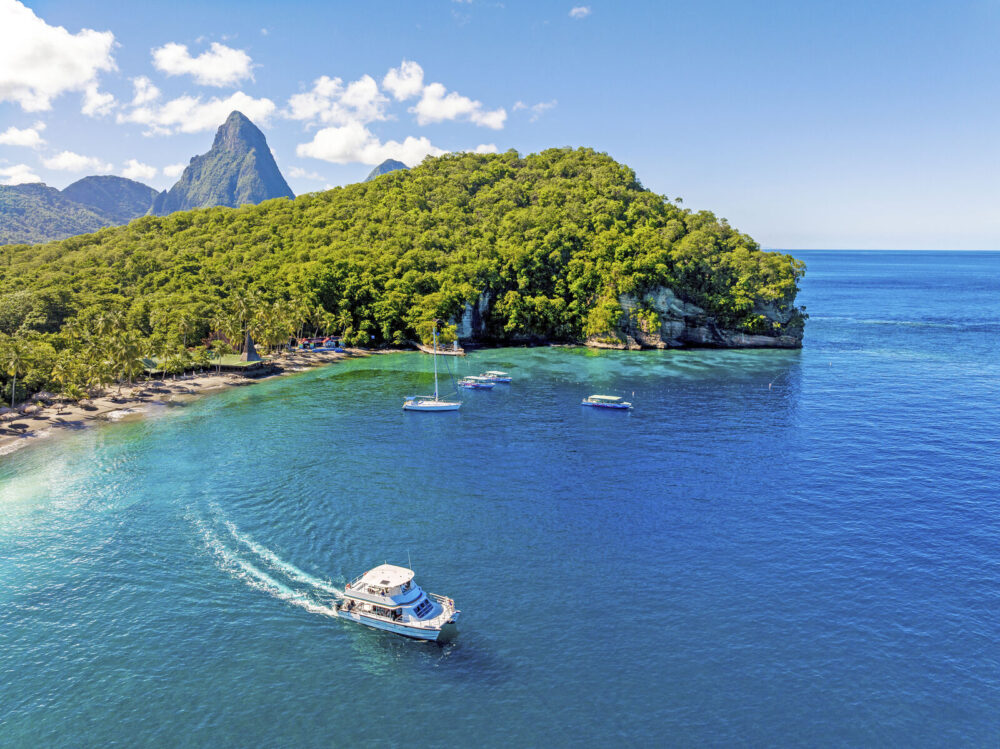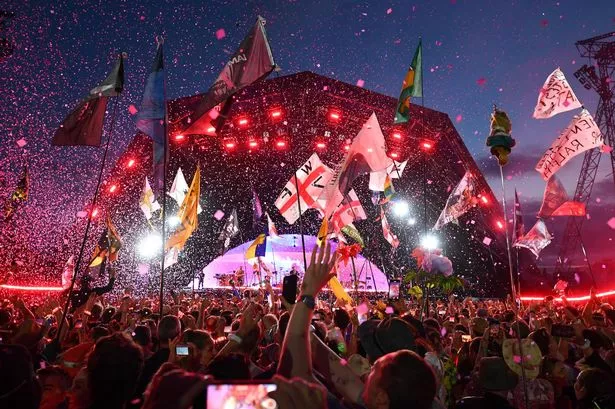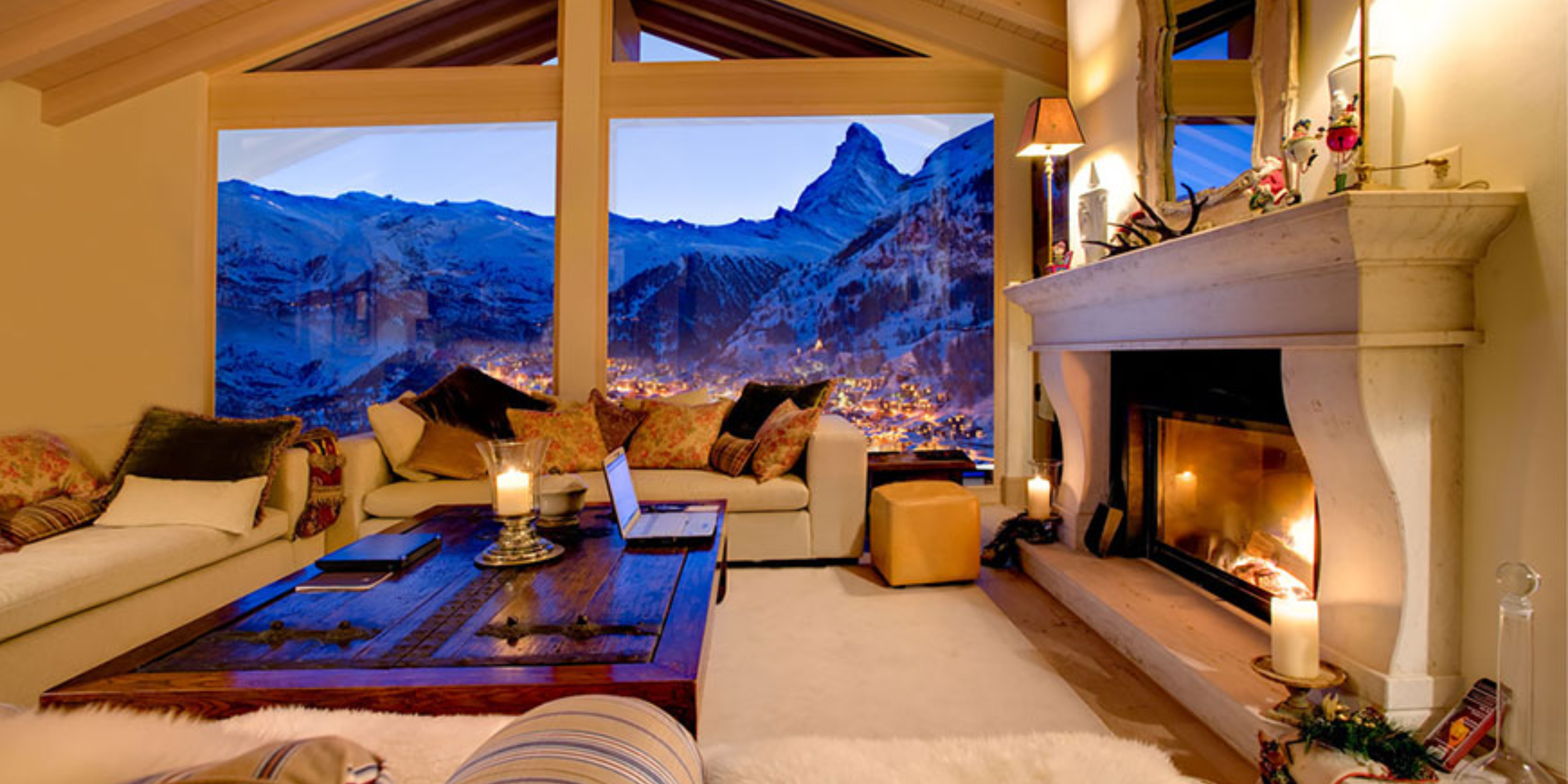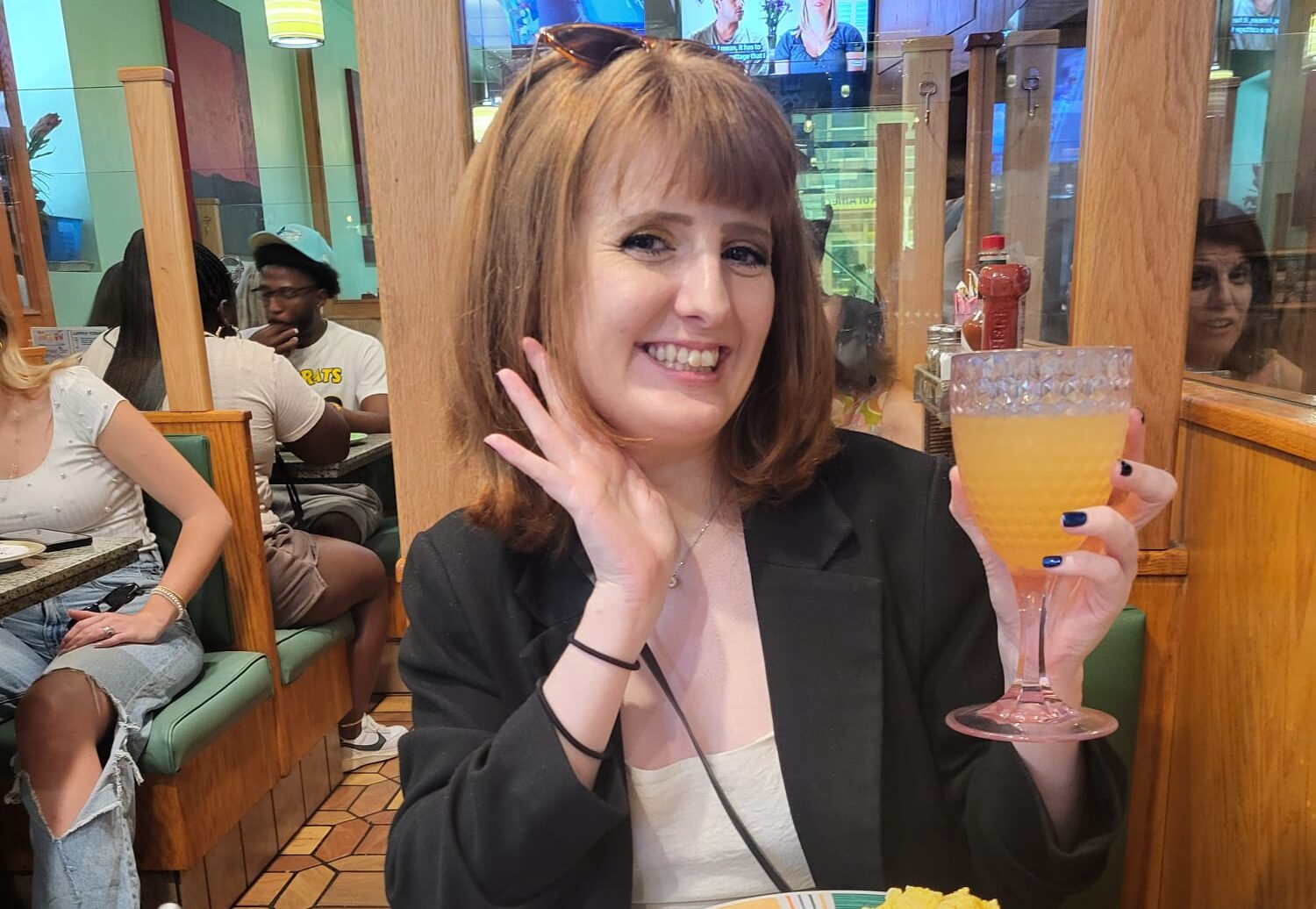by Isabel Conway –
A male dancer in skin tight pants, buttons almost popping off his shirt with exertion, is strutting, stamping and twirling in time to the pounding guitars. His face is a picture of intense soulful passion his thunderous footwork thrills his audience. It’s all uninhibited, passionate, faintly dangerous, and oh so Spanish!
Listed in the book “1000 Places to see Before You Die” there’s no better place to enjoy Spain’s legendry Flamenco than at the most famous of Madrid’s venues Corral de La Moreria whose past customers have ranged from Ron Wood of the Rolling Stones to the late Mohammed Ali and dozens of celebs in between.
Flamenco’s may be rooted in the gypsy villages of Andalusia, but nowadays Madrid attracts the top performers to small intimate stages like this one performing authentic ‘Tablao Flamenco’ a fusion of singers, dancers and musicians.
Two male and one female performer – the trio were multi award winning flamenco dancers – a multi-award trio – and a suitably anguished looking guitarist kept us spellbound, letting our dinner go cold as the show climaxed into a spectacular Dervish like finale.
The woman, all wild hair and flounced skirts, flaunted her disdain with much head-shaking and finger- clicking to her would be suitors. One of the men then spun like a top into the air, spraying beads of sweat into my companion’s glass of wine. That’s how close we were.!
What happens in Madrid stays in Madrid I decide enrolling at a famous flamenco dance academy to explore the challenges of one of the world’s sexiest and most flamboyant conversations conducted with the feet.
WHERE TO DANCE THE DANCE:
Amor de Dios (God’s Love) Centro de Arte Flamenco y Danza, a famous flamenco dance academy hidden away on the upper floors of Anton Martin market, Calle de Santa Isabel, is a flashback to ‘Fame’, Alan Parker’s 1980 teen musical drama.
Sadly my hopes of being kitted out in a beautiful polka dot frilled flamenco dress are quickly dashed. My rented skirt is circular and black, more in tune with mourning than dancing. The first simple movements involve stretching my arm up to pluck an imaginary fruit off a tree with a twist, then hold it behind my back. I resemble a person me with severe backache instead.
Our teacher, human dynamo, Isabel Trivino takes us through more basics, how to lift the heels of our shoes in rhythm to our clapping hands, and stamp at high speed while moving our hips back and forth. “Listen to your heels hitting the ground, there’s an animal inside you waiting to get out” she urges. You’re fierce, you’re angry, you’re passionate; you’re feeling the flamenco”.
After an hour and a half of foot stamping, whirling around, hands sore from clapping I am perspiring almost as much as the dancer we later watch. Kissing us warmly as I limp out at the end of the introductory lesson my namesake Isabel claps and cries “rapido divertido” (fast and fun!) Ole!
CITY BREAK WITH A TWIST
We’re on a Madrid city break and the challenge is to fit so much into just a long weekend: majestic squares and monuments, atmospheric barrios (neighbourhoods), famous art museums such as the legendry El Prado and Reina Sofia, temple to modern masterpieces of Picasso and Salvador Dali, and all those atmosphere-laden cafes and bars. We also want to visit the beautifully traditional food markets and follow a little in the footsteps of Ernest Hemingway and Real Madrid. That may all seem like a tall order but do some research, have Google maps handy, wear comfortable shoes and stay on the move from morning until dark night with plenty of stops for strong coffee and later wine and tapas.
IN THE FOOTSTEPS OF PAPA HEMINGWAY
Hemingway loved Madrid, leaving a boozy trail at high end restaurants, literary bars and spit and sawdust cafes down by the Matadero where he watched the matadors practise. His novel “The Sun Also Rises”, features one of his favourite restaurants ‘ Sobrino de Botin’,recognised by the Guinness Book of Records (established in 1725) as the world’s oldest eating house. The house speciality Cochinillo Asada (roast suckling pig) was Hemingway’s favourite dish, washed down with lots of Rioja Alta. He would arrive mid- morning and write upstairs, permitted to mix his own cocktails, while waiting for friends.
A TRAIL OF TAPAS
You’re in the capital so it goes without saying that the tapas of Madrid are magnificent. We queue for a table at Casa Alberto, in business since 1827, that bursts with locals and tourists and where Real Madrid players hang out. Many of the locals are drinking a Tinto de Verano (soda water and Vermouth) or beer much to my astonishment, having ordered Rioja. La Latina, Santa Ana and Huertas districts are renowned for their tapas cafes and you can graze for free on your tavern crawl, ordering a glass of wine or other drink in each bar with a free tapa that could include Manchego cheese, Iberico ham or filling Pincho de Tortilla (pieces of Spanish omelette)
Marketvalue:
Madrid’s best known food market Mercado de San Miguel is in a restored belle époque style glass and wrought iron covered market hall whose stalls display tempting tapas and cava by the glass. You can also purchase fantastic olive oil together with a couple of kilos of fat black olives in tins and wines from all over the region or vacuum sealed Iberico hams and cheeses.
And a last tip:
Wear comfortable shoes, keep your valuables close to you at all times (though compared with other cities Madrid is relatively safe) when visiting in high summer wear a hat and get into the siesta vibe so you can enjoy the customary late night dinners. Take your time visiting the vast Prado and the relatively nearby Reina Sofia museum which houses one of Europe’s most important contemporary art collections. Both museums offer free entry after 6pm.

